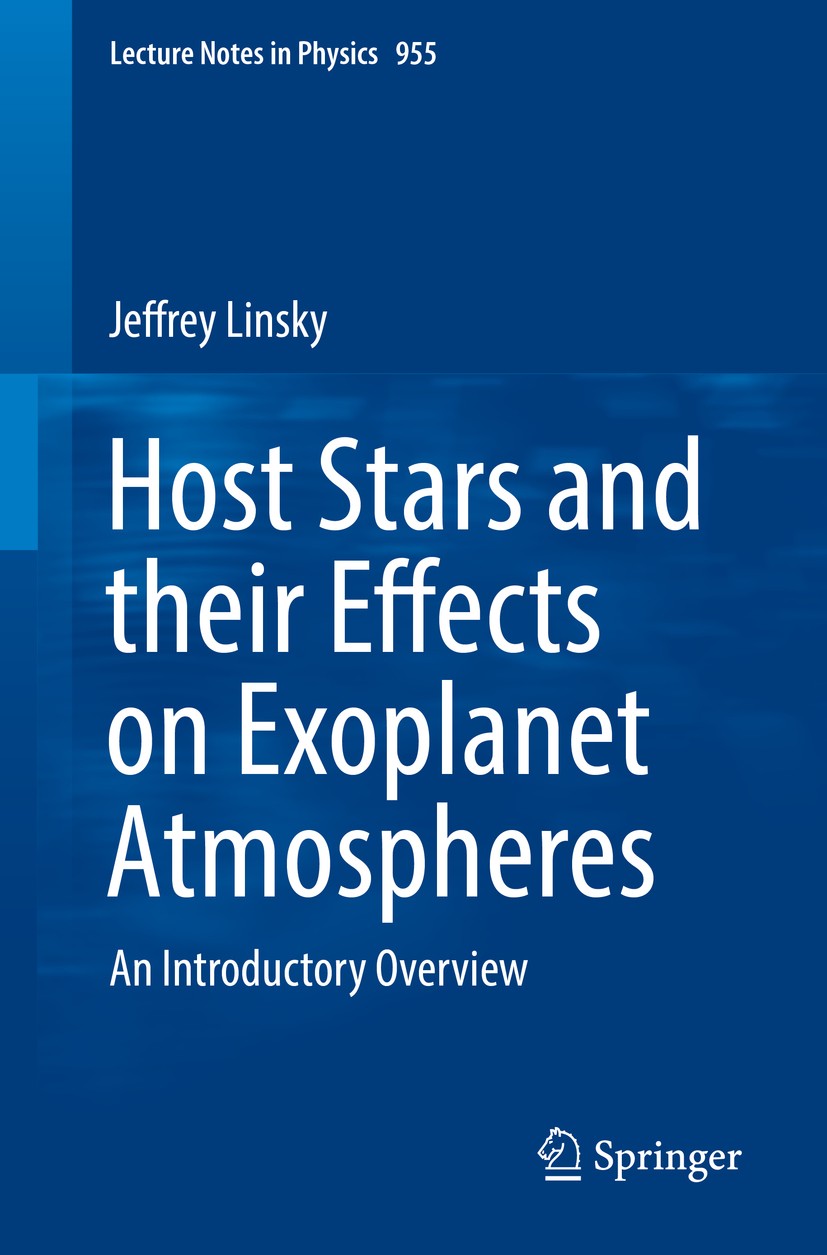| 书目名称 | Host Stars and their Effects on Exoplanet Atmospheres |
| 副标题 | An Introductory Over |
| 编辑 | Jeffrey Linsky |
| 视频video | http://file.papertrans.cn/429/428413/428413.mp4 |
| 概述 | First topical primer for non-specialists in the field.Written by a leading expert in the field.Includes many figures and tables |
| 丛书名称 | Lecture Notes in Physics |
| 图书封面 |  |
| 描述 | .Like planets in our solar system, exoplanets form, evolve, and interact with their host stars in many ways. As exoplanets acquire material and grow to the final size, their atmospheres are subjected to intense UV and X-radiation and high-energy particle bombardment from the young host star. Whether a planet can retain its atmosphere and the conditions for significant mass loss both depend upon the strength of the host star‘s high-energy radiation and wind, the distance of the exoplanet from its host star, the gravitational potential of the exoplanet, and the initial chemical composition of the exoplanet atmosphere... .This introductory overview describes the physical processes responsible for the emission of radiation and acceleration of winds of host stars that together control the environment of an exoplanet, focusing on topics that are critically important for understanding exoplanetary atmospheres but are usually not posed from the perspective of host stars. Accordingly, both host stars and exoplanets are not studied in isolation but are treated as integrated systems. Stellar magnetic fields, which are the energy source for activity phenomena including high-energy radiation a |
| 出版日期 | Book 20191st edition |
| 关键词 | Planetary atmospheres; Exoplanetary aeronomy; Stellar photochemistry; Star-planet interactions; Habitabl |
| 版次 | 1 |
| doi | https://doi.org/10.1007/978-3-030-11452-7 |
| isbn_softcover | 978-3-030-11451-0 |
| isbn_ebook | 978-3-030-11452-7Series ISSN 0075-8450 Series E-ISSN 1616-6361 |
| issn_series | 0075-8450 |
| copyright | Springer Nature Switzerland AG 2019 |
 |Archiver|手机版|小黑屋|
派博传思国际
( 京公网安备110108008328)
GMT+8, 2025-11-15 04:34
|Archiver|手机版|小黑屋|
派博传思国际
( 京公网安备110108008328)
GMT+8, 2025-11-15 04:34


